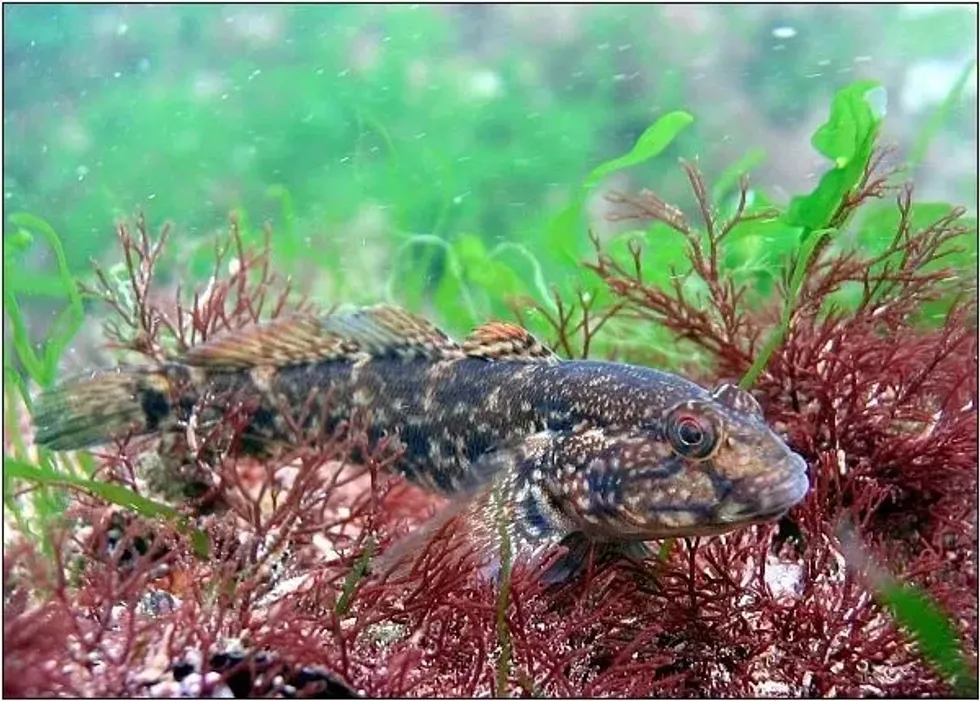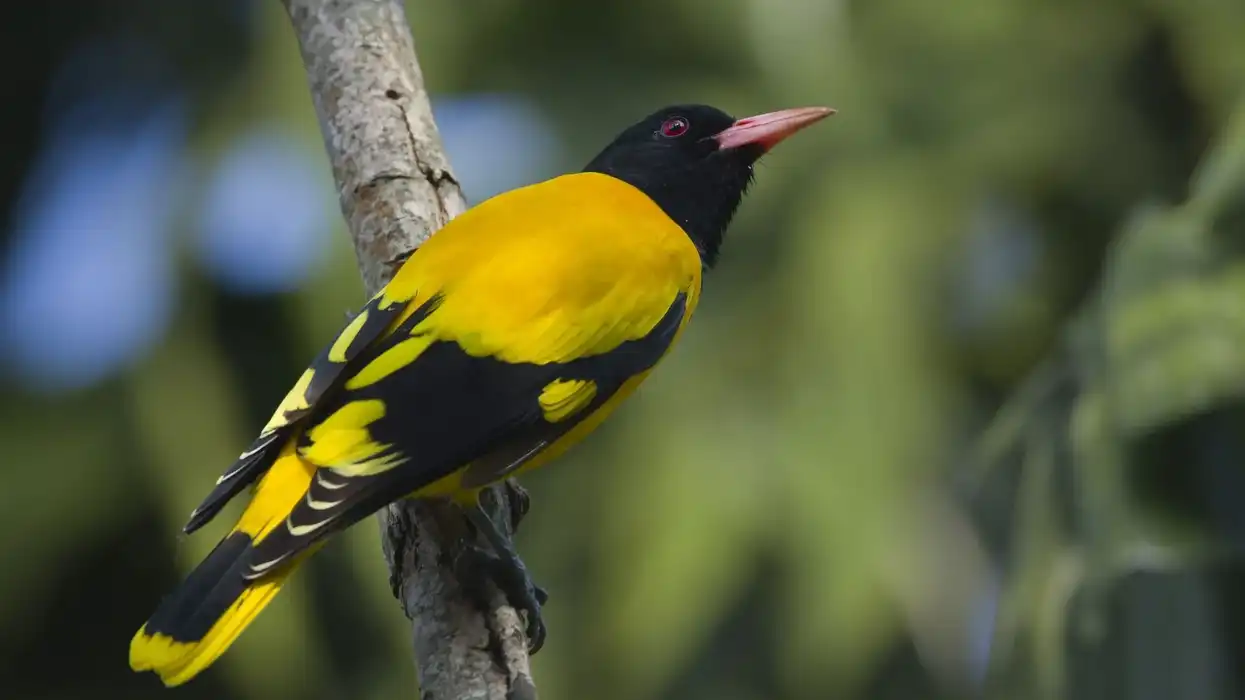Gobiidae is one of the largest fish families with over 2,000 small to medium-sized bony fish species which are further divided into more than 200 genera and are often called true gobies.
This article is about a special goby fish belonging to this family and it includes information about their range, distribution, habitat, description, diet, similar species, life span, feeding, breeding, and nesting habits!
The black goby (Gobius niger) is a small fish belonging to the Gobiidae family and is native to the shallow marine waters of the eastern Atlantic Ocean, the Mediterranean Sea, and the Black Sea.
It is a species of ray-finned fish, whose neck is scaled and is uniform blackish-brown, a black spot in the front end of each dorsal fin, and visible dark markings near its large head. These fishes prey on a variety of small fish, invertebrates, crustaceans, and worms.
They are quite popular as pets and have high demand in the aquarium trade business.
The species was first introduced and described as Gobius niger by Carl Linnaeus, a Swedish zoologist, and taxonomist in 1758. They are often confused with the rock goby as both share an uncanny resemblance to each other e.g.
both have similar colors and patterns.
They are usually differentiated by observing their natural habitat as the rock goby lives in rocky areas whereas the black goby (Gobius niger) prefers sandy or muddy regions, or under a rock that is covered by mud.
Their range is quite extensive and can be found from Cape Blanc, Mauritania to Trondheim, Norway, all around the coasts of Britain and Ireland, and the Baltic Sea.
They are generally found at depths of 160 ft (50 m).
The typical or standard habitat of the species is usually inshore waters and estuaries, lagoons, sandy or muddy bottoms covered with seagrass and seaweeds, and are occasionally found in freshwater bodies.
Want more information about this marine animal including a detailed description of what they look like, their common and scientific name, subspecies, life span, distribution and range, marine biology, and what they eat?
Read on to find out!
Learn about some other fish from our channel catfish facts and rainbow trout facts pages.
Black Goby Interesting Facts
What type of animal is a black goby?
The black goby (Gobius niger) is a fish belonging to the Animalia kingdom.
What class of animal does a black goby belong to?
The black goby (Gobius niger) belongs to the Actinopterygii class and is the genus of Gobiopsis.
How many black gobies are there in the world?
The accurate data about their population size is unknown. But the species face the dangers of extinction as their numbers have been rapidly decreasing and have failed to recover from it for the past few years.
Where does a black goby live?
The black goby (Gobius niger) distribution occurs across Europe and the eastern Atlantic Ocean, the Mediterranean Sea, and the Black Sea. They are occasionally found near the north coast of Africa and up to the Baltic Sea.
Their range extends up to the coasts of the British Isles. The species is sometimes found along the coast in the Gulf of Finland and Kristiinankaupunki in the Gulf of Botnia.
What is a black goby's habitat?
This marine animal lives in shallow eastern Atlantic waters, the Black sea, and is sometimes found in deep-sea waters. Gobius niger spend their lives in intertidal areas, inshore areas, and in estuaries tidal river areas.
They are often found in lagoons, sandy or muddy sea beds surrounded with seagrass and algae, estuaries, inshore waters, under a rock that is covered with mud or sand.
Who do black gobies live with?
Gobius niger is a solitary species and temporarily pairs up for the breeding season.
How long does a black goby live?
The black niger goby is a small fish and its life span varies according to its habitat. Some fishes live for just a year and some up to 10 years.
How do they reproduce?
Species that spend their lives in areas with warm waters reach sexual maturity a few months after birth, while gobies that inhabit cooler environments take about two years to fully mature as adults. Gobius niger breed throughout their distribution, and the breeding season begins in summer.
At this time male species begin claiming suitable territories to attract females i.e. shallow weedy, sandy, or muddy areas around plenty of seagrass and other marine plants.
Males of this species work hard to build their nests (which are prepared at the bottom of a clean seabed) to impress a female, as they are the ones who inspect the nest and mate with the male whose nest she likes.
After pairing up, females lay their eggs in the nest and the male species are responsible to guard and protect them until they hatch. The young larvae are often preyed on by sea snakes.
What is their conservation status?
The IUNC Red List of Threatened Species has classified the Gobius niger species as Near Threatened.
Black Goby Fun Facts
What do black gobies look like?
It is a small fish whose common name comes from its dark almost black or brown color, but this piece of information isn't helpful at all, as several other species from the Gobiidae family usually have the same coloration e.g. the rock goby.
They are usually black or grayish-brown in color with dark patches running all over their elongated body, a large head marked with black papillae sensory lines, the first dorsal fin is placed quite high or in the front, two triangular dorsal fins both marked with a black spot.
All these features are prominent among males than females e.g. the first dorsal fin among male species is more elaborated and noticeable.
To help you distinguish the species from other goby fish, here is some additional information and physical description of other goby species.
Unlike its common name is not always black, and it isn't even as dark as the mature males of the rock goby species. It has around 32-45 scales, near the lateral line which may be significantly less among rock gobies.
The black goby has a rounded and more defined body than the sand goby, common goby, and two-spotted goby.
The species also has a large-rounded snout, two dorsal fins that are almost continuous, and soft rays. The latter dorsal fin in contrast to the common and sand gobies occurs after a long gap from the caudal fin.

How cute are they?
These fish look fairly cute due to their large head and round eyes.
How do they communicate?
Gobies typically communicate via visual and chemical channels.
How big is a black goby?
The average length of this Atlantic fish is around 2-2.8 in (5- 7 cm) but can reach a maximum length of 7 in (18 cm)! An octopus is nearly seven times bigger than this fish.
How fast can a black goby swim?
A black goby swims in a swift shooting manner which looks like they are hopping from one place to another.
How much does a black goby weigh?
A black goby weighs around 2.2 oz (63 g ).
What are the male and female names of the species?
These species do not have separate names for their male and female members. They are simply denoted as males and females.
What would you call a baby black goby?
A baby black goby is called a larva.
What do they eat?
They are found foraging across their distribution i.e. the Eastern Atlantic, Mediterranean, and Black sea. Their diet is usually made up of marine worms, shrimps, crustaceans, small fish, and polychaetes.
Several marine and land predators like laughing gulls often prey on them.
Are they dangerous?
These species are fairly aggressive, but not as much as the round goby, which is also poisonous. The round goby is also considered problematic because it's linked with a disease outbreak called botulism type E in Great Lakes fish and fish-eating birds.
They may attack any fish that tries to invade their territory but are not dangerous to humans. Most gobies are not poisonous and are edible in Chinese cuisine.
Would they make a good pet?
No, since this species is classified as Near Threatened we do not recommend you to keep them as pets.
Did you know...
All gobies spend their lives in identical marine habitats but just some different preferences e.g. the rock goby unlike the rest that like living in lagoons, at the bottom of the sea, and mud-covered regions, prefers living in rocky areas with tiny pebbles, and sand.
What are the different types of black gobies?
Here are few species of the Gobiidae family: the black goby, black ray goby, black sailfin goby, black-eyed goby, black clown goby, black watchman goby, black striped goby, black-barred convict goby, black-barred barred goby, black-barred reef goby, black-banded goby, black and white striped goby, black-barred circus goby care, black urchin stung goby, black cap goby, black line goby, black and yellow goby fish, and black watchmen goby.
Most gobies are also reef-safe!
Others may feed on small ornamental reef crustaceans.
What are the characteristics of a black goby?
These fish despite their name, sometimes are not fully black and have a giant head for their size. They also work hard to impress females during the breeding season, which is so adorable, don't you agree?
Here at Kidadl, we have carefully created lots of interesting family-friendly animal facts for everyone to discover! Learn more about some other fish from our meagre fish facts or white tuna facts pages.
You can even occupy yourself at home by coloring in our free printable neon goby coloring pages.










